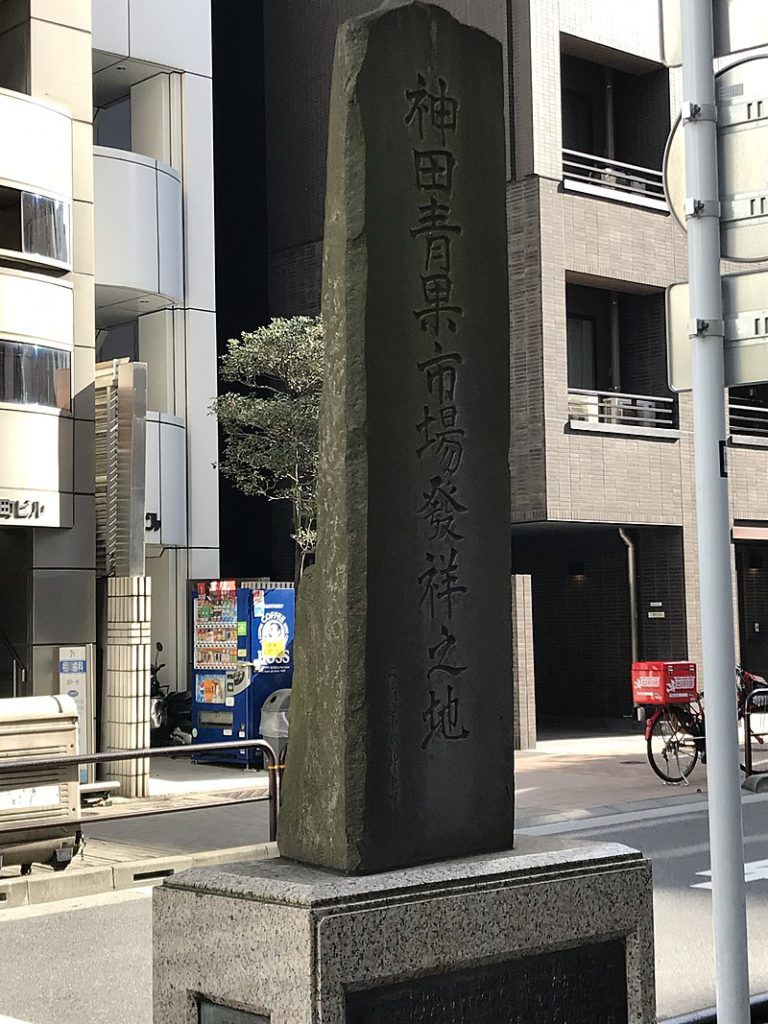Blog
2019.09.11
Kanda
The Kanda Vegetable Market
As we’ve shown you via the last 5 entries in our blog series, the neighbourhood of Kanda, where Transeuro is located, is a place that played a central role in a variety of fields throughout the Edo era, including swordsmanship, learning, public transportation, faith, and artisanship. Today, we’d like to examine another side of Kanda by looking at its role as a food distribution hub. Did you know that Kanda had a fresh produce market?

The Population of the Edo Era and Food Supply
Edo was a city which rivaled the likes of Paris and London in terms of population. In 1826, the German physician Franz von Siebold visited Japan and noted that the population of Edo, including both the commonfolk and the samurai, exceeded 1.5 million. However, we must be careful not to confuse old Edo with modern-day Tokyo. What was referred to as Edo back then was the area which occupies the present-day Chiyoda Ward and its immediate surroundings. In 1865, the total land area of the city was 79.8km2. A steady supply of food was necessary to support this level of population density, and the task was not left entirely to the people; the Edo Shogunate itself oversaw the distribution of food.
The History of the Kanda Fruit and Vegetable Market
The Kanda Market was originally a private venture opened by a local lord who owned the land, but after the Great Fire of Meireki in 1657 many various markets came together and formed a newer, much larger-scale operation. This market came to be known as one of the 3 Great Fruit and Vegetable Markets in Tokyo, alongside the ones in Komagome and Senjū. Additionally, public offices were set up in order to operate the markets, and the market also served the function of procuring food for the Shogunate, as tithes of vegetables were often ordered to be delivered to Edo Castle. In 1756, it’s said that there were 152 wholesale dealers of fruit and vegetables in the city, so one can imagine the market was quite a bustling place.
Additionally, the Kanda Fruit and Vegetable Market was located to the south of Manseibashi, where it was possible to use the Kanda river as a canal, making it an ideal location for the shipping and movement of products. Since Edo was a city with a fairly developed waterway network, it was considered extremely important to have a river with a stable current (such as a canal) in order to carry out trade. (Due to this, there are many fascinating anecdotes and stories of hardship surrounding the building of rivers and canals in Edo, but we’ll save those for another time!)
The Kanda Fruit and Vegetable Market in the Present
The Market continued to develop and grow as the Edo era continued, but at the start of the Showa era, the incredible advancement of the railway caused it to be moved to present-day Akihabara. The era of the waterway had finally come to an end.
Now, nothing remains at the site of the old market except a stone monument (located in Chiyoda ward, Kanda Sudacho 1-8, Kanda-Sudacho Crossing). If you’re taking a stroll around Kanda, why not give it a look?

Photo by Croooooitz /CC BY-SA 4.0
These days in Tokyo, many “Edo Vegetables” are making the rounds in markets. Even the very common vegetables sold, such as cucumbers, eggplants, and turnips, seem to have a taste and quality unique to the place they were grown. I’m sure some of you are asking yourselves, wait, are there really farms like that in Tokyo? It’s true – they exist hidden away quietly in places where most tourists don’t visit. Are you curious enough to try out this historic taste for yourself? If you’d like to try Edo Vegetables, it might be a good idea to seek out one of these stores around Kanda!
Similar Posts
[jetpack-related-posts]



Leave a Reply